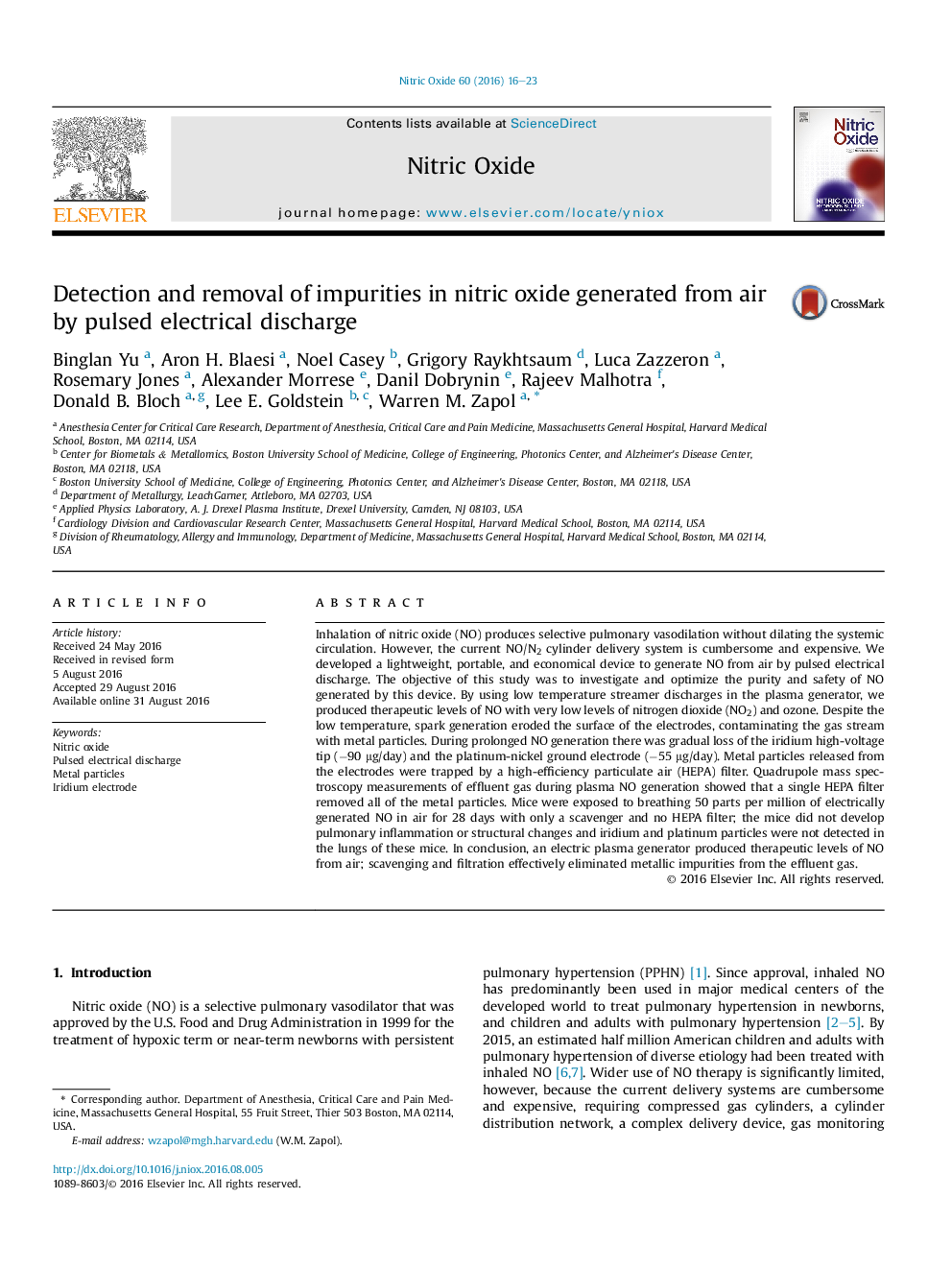| Article ID | Journal | Published Year | Pages | File Type |
|---|---|---|---|---|
| 8344795 | Nitric Oxide | 2016 | 8 Pages |
Abstract
Inhalation of nitric oxide (NO) produces selective pulmonary vasodilation without dilating the systemic circulation. However, the current NO/N2 cylinder delivery system is cumbersome and expensive. We developed a lightweight, portable, and economical device to generate NO from air by pulsed electrical discharge. The objective of this study was to investigate and optimize the purity and safety of NO generated by this device. By using low temperature streamer discharges in the plasma generator, we produced therapeutic levels of NO with very low levels of nitrogen dioxide (NO2) and ozone. Despite the low temperature, spark generation eroded the surface of the electrodes, contaminating the gas stream with metal particles. During prolonged NO generation there was gradual loss of the iridium high-voltage tip (â90 μg/day) and the platinum-nickel ground electrode (â55 μg/day). Metal particles released from the electrodes were trapped by a high-efficiency particulate air (HEPA) filter. Quadrupole mass spectroscopy measurements of effluent gas during plasma NO generation showed that a single HEPA filter removed all of the metal particles. Mice were exposed to breathing 50 parts per million of electrically generated NO in air for 28 days with only a scavenger and no HEPA filter; the mice did not develop pulmonary inflammation or structural changes and iridium and platinum particles were not detected in the lungs of these mice. In conclusion, an electric plasma generator produced therapeutic levels of NO from air; scavenging and filtration effectively eliminated metallic impurities from the effluent gas.
Related Topics
Life Sciences
Biochemistry, Genetics and Molecular Biology
Biochemistry
Authors
Binglan Yu, Aron H. Blaesi, Noel Casey, Grigory Raykhtsaum, Luca Zazzeron, Rosemary Jones, Alexander Morrese, Danil Dobrynin, Rajeev Malhotra, Donald B. Bloch, Lee E. Goldstein, Warren M. Zapol,
